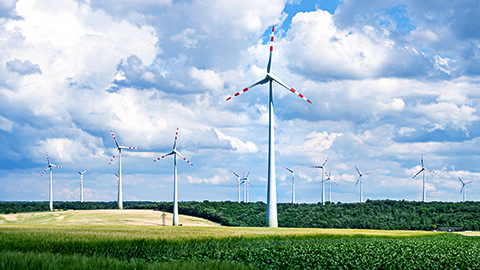The heightened focus on corporate sustainability initiatives is an anticipated maneuver to address the increasing number of climate-related risks. Climate change, in particular, is a global issue that endangers human health and reshapes public policy decisions.
According to a recent climate update released by the World Meteorological Organization (WMO), there’s a 50:50 chance the annual average global temperature will reach 1.5°C in the next five years. If such a prediction takes place between 2022 to 2026, it could dislodge 2016 from the top ranking in the warmest year on record.
Global heating is commonly linked to physical and mental health problems, affecting millions of people. But another major segment that extreme heat events hit is the business industry — causing productivity losses, damaging physical assets, and changing customer preferences. This forces companies to take climate actions such as reducing energy consumption, building greener infrastructure, optimizing employees’ transportation, and choosing sustainable suppliers.
Environmental Issues Faced by Companies
Having the ability to push beyond creating policies requires a gaping understanding of the actual environmental issues. From a business perspective, a lack of fitting action can lead to social and economic disasters, such as energy shortages and global financial market collapse. Below are the top five environmental concerns that companies face today.

1. Global warming
Primarily caused by greenhouse gas emissions, global warming leads to other serious environmental issues such as desertification, flash floods, and rising sea levels. According to a recent climate report by the UN, “It’s now or never, if we want to limit global warming to 1.5°C (2.7°F); without immediate and deep emissions reductions across all sectors, it will be impossible,”
This warns countries that if climate actions, like cutting off fossil fuels, are not done right away, preventing an overheated planet will be out of reach. Ecosystem collapse, wildfires, and floods will worsen. These pose several risks such as:
- Physical risks — damage to transit infrastructure, buildings, and roads, causing government-service shutdowns or power outages.
- Transitional risks — changes in consumer trends and technologies, policy and regulatory risks, and other economic shifts.
- Liability risks — failure to comply with legal environmental requirements can expose companies to potential litigation.
2. Waste and pollution
Businesses generate volumes of waste every day, may it be paper or hazardous waste. Not only are these harmful to the environment but also cost businesses money. Improper handling and disposal of waste can lead to pollution, particularly toxic landfill gases and harmful industrial wastewater.
If neglected, this environmental concern can cause sewage plants and landfills to overflow, affecting not just the operations of businesses but their host communities as well. Other contributing factors include carbon emissions, food waste, and plastic pollution.
3. Rising sea levels
Another top environmental issue affecting businesses nowadays is the rising sea levels. The warming planet can trigger natural disasters, leading to threats like severe storms and intense tidal flooding. These can then cause reduced business distribution to coastal regions, higher equipment and maintenance costs, and infrastructure and transportation complications.
A 2019 study predicts that sea-level rise (SLR) can exceed two meters by 2100, which can set off economic tumult and put millions of individuals in danger. These rising sea levels are largely due to vulnerable infrastructures, such as water treatment facilities, underground raceways, and power plants.
4. Loss of biodiversity
Numerous links in the food chain depend on biodiversity. For instance, animals that depend on extinct ones will have a harder time adapting, or worse, they can go extinct too. This kind of phenomenon can lead to food security issues. Businesses, their host communities, and everything else in the society are at risk in such a biodiversity crisis.
Deforestation, for one, greatly impacts biodiversity in a lot of ways. Destroying forests and converting them to urban or commercial use directly affects the wildlife — destroying natural habitats and driving extinctions around the globe.
Man-made pressure and business activities linked to resource cultivation and extraction are the other big contributors to driving biodiversity loss — which also causes ecosystems to fail. If this happens, it can pose business risks, such as backlash from investors and customers and increased raw material costs.
5. Climate change
Climate change is undeniably affecting every region and ecosystem around the globe. Its natural causes include volcanic eruptions and the sun’s intensity, while the anthropogenic causes or ones relating to human activity encompass the burning of fossil fuels and deforestation.
Products of climate change like flooding can damage the ecosystem and spread diseases, and drought can adversely affect human health and food production. But apart from these, this environmental issue also causes corporate casualties. A perfect example is the first reported climate change bankruptcy — the collapse of Pacific Gas and Electric (PG&E). The California-based utility company filed for bankruptcy back in 2019, facing an estimated $30 billion worth of liabilities over the tragic wildfires in 2017 and 2018.
How Companies Can Manage Climate Change Risks
Companies are prioritizing sustainability not just because they want to help save the planet, but also to meet customer demand. In the Deloitte Resources 2020 Study, about two-thirds of businesses claimed customers demand that they switch to renewable energy. This is an expected outturn as consumers are becoming more environmentally conscious.
According to the Global Sustainability Study 2021 by Simon-Kucher & Partners, 85% of consumers said they have shifted towards a more sustainable purchase behavior. Companies that do not share the same sustainability goal can experience a loss of market share and potential reputational impacts. Here’s another example of the percentage of consumers that care about a company’s ESG practices:

Source: PWC
Committing to responsible climate actions can help businesses not only address consumer concerns but also be a significant player in the sustainability movement. One critical action plan to ponder on is the decarbonization strategy, which analyzes how a business efficiently minimizes carbon emissions and waste. Among the key emission sources to investigate are the company’s direct and indirect emissions, and purchased electricity. Looking into these creates better solutions on how to cut emissions by at least 30% to 70% over a five to 10-year period.
Lastly, global organizations and companies are making net-zero commitments. Specifically, the target is to bring a net-zero energy system by 2050, constructing an economically productive pathway and maintaining cost-effective, resilient energy. In March 2022, the UN established a High-Level Expert Group on the Net-Zero Emissions Commitments of Non-State Entities — to create clearer recommendations and standards for net-zero emissions of the regions, businesses, and investors.
The Role of ESG in Climate Action
Not surprisingly, climate change greatly impacts businesses and host communities. Natural disasters such as typhoons and hurricanes can destroy agricultural yields, and weather events like droughts and floods can damage physical properties and equipment. This pushes businesses to map opportunities for addressing climate change and future growth.

For creating long-term sustainability and growth plans, more and more companies recognize the importance of incorporating ESG. The effort is meant to assess climate change issues, as well as improve the availability of climate-related financial disclosures. These statements include the potential risks of climate change to a company’s financial health. Companies also disclose their risk management strategies for climate-related concerns and the physical impacts of the issues.
Organizations, however, understand that creating these climate-related or ESG reports comes with several hurdles: choosing from multiple ESG frameworks, keeping up with the evolving regulations, and managing complex ESG data.
Utilizing solutions like Convene ESG can make the process more efficient and help companies save time. Such an end-to-end ESG reporting software allows businesses and leaders to guarantee full compliance and total ownership of the reports. Whether it’s tracking sustainability strategies or monitoring performance and data, our ESG software can help out. Learn more about our end-to-end ESG reporting software, Convene ESG.














